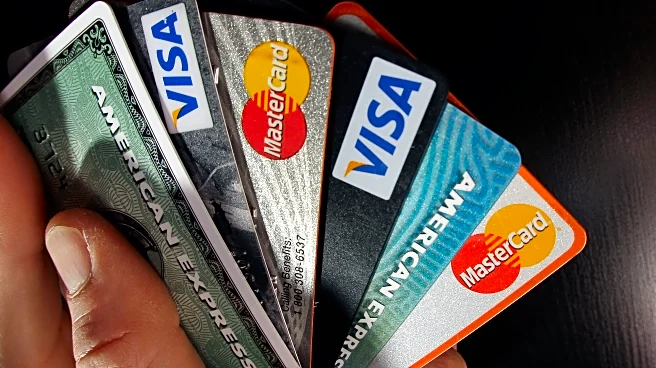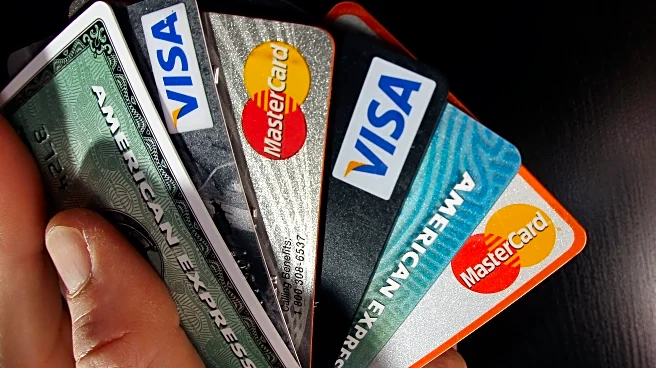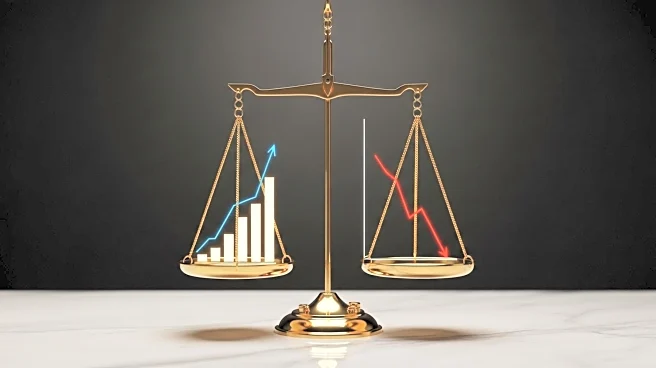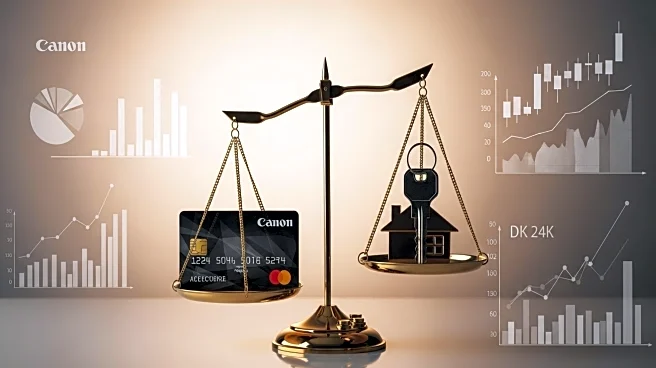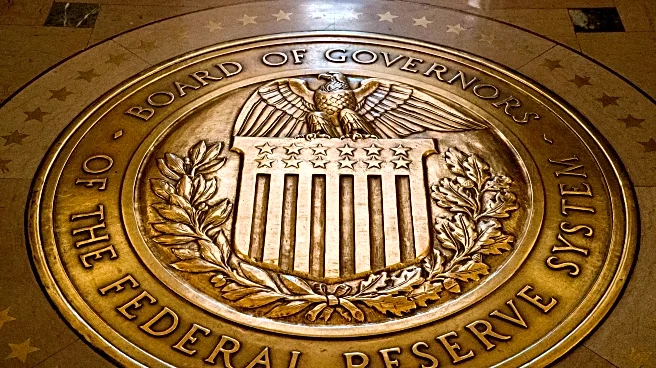What's Happening?
The Federal Reserve has reduced its benchmark interest rate by 25 basis points, bringing it to a range of 4.00% to 4.25%. This decision follows a period of stable rates throughout 2025 and is influenced by reports of modest inflation and a weakening job market. The rate cut affects borrowing costs for credit cards, auto loans, and mortgages, while also impacting yields on savings products. Financial advisors suggest strategies for consumers to benefit from the rate cut, such as paying off high-interest credit cards and refinancing student loans.
Why It's Important?
The rate cut has significant implications for both borrowers and savers. Lower borrowing costs can stimulate consumer spending and investment, potentially boosting economic growth. However, savers may see reduced returns on savings accounts and CDs. The decision reflects the Fed's attempt to balance economic growth with inflation control, amid concerns about a slowing job market. The move also highlights the interconnectedness of financial markets, as changes in the federal funds rate influence a wide range of financial products.
What's Next?
The Federal Reserve is expected to meet again in October and December, with the possibility of further rate cuts. Economists are divided on the extent of future reductions, with some predicting additional cuts by the end of the year. Consumers and businesses will need to monitor these developments closely, as they could impact financial planning and investment strategies.



